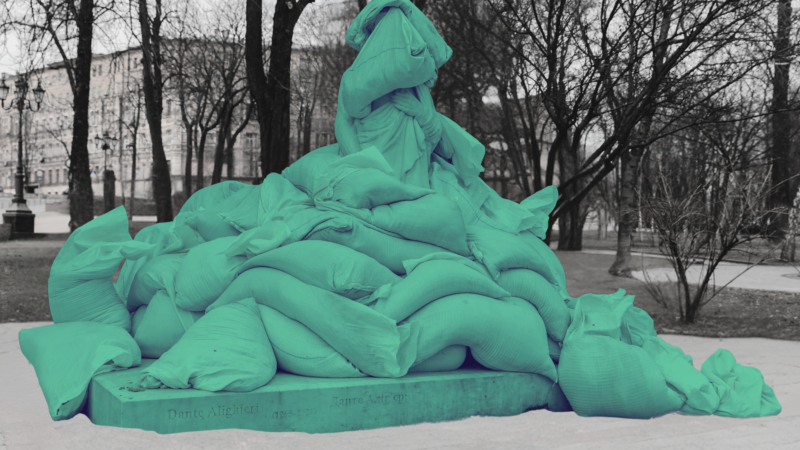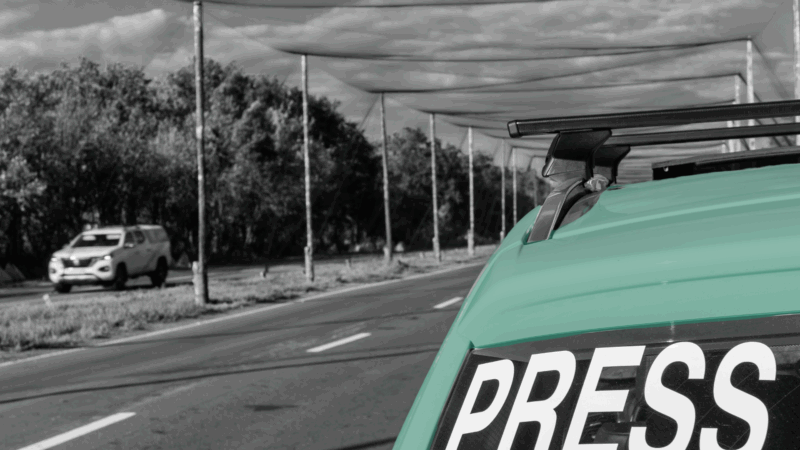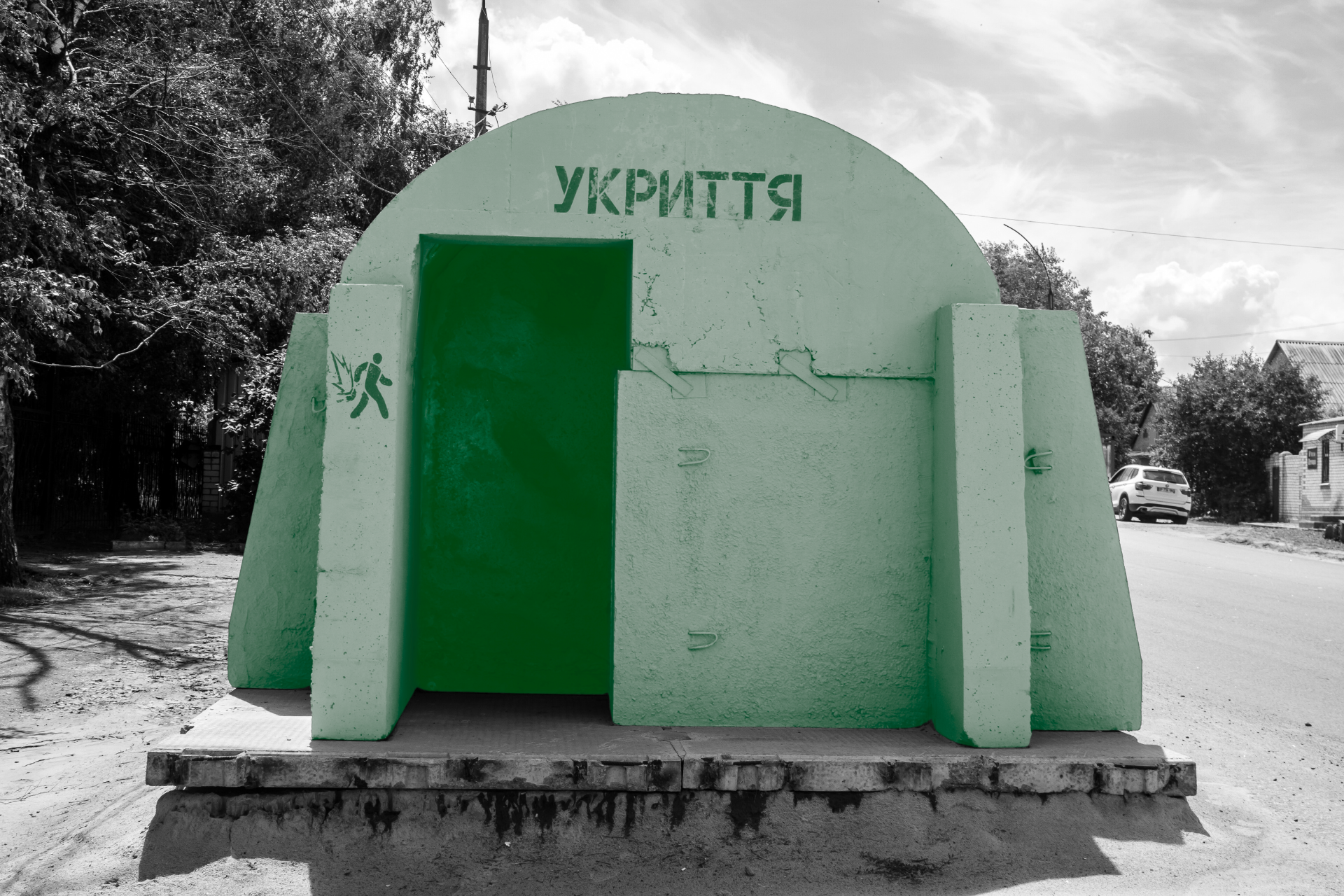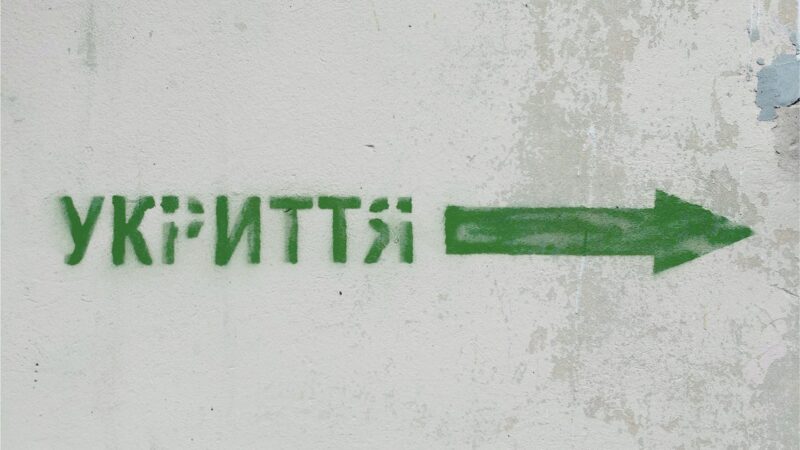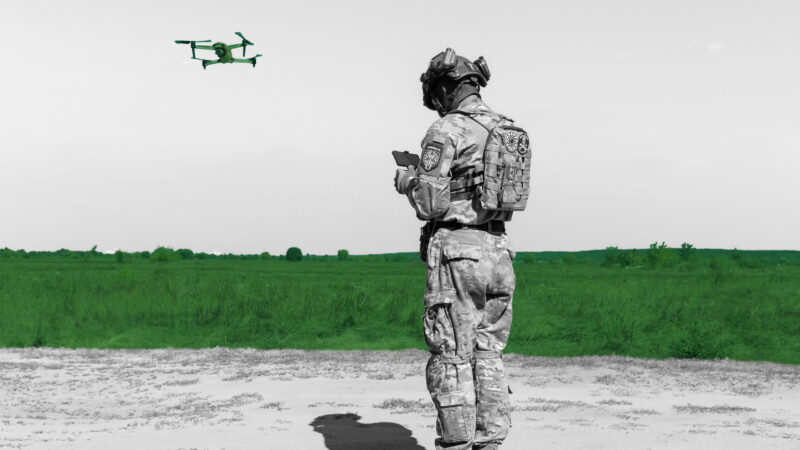Interview with Mykola Bielieskov: “Ukrainians have crossed the threshold of fear. They’re fighting for victory”
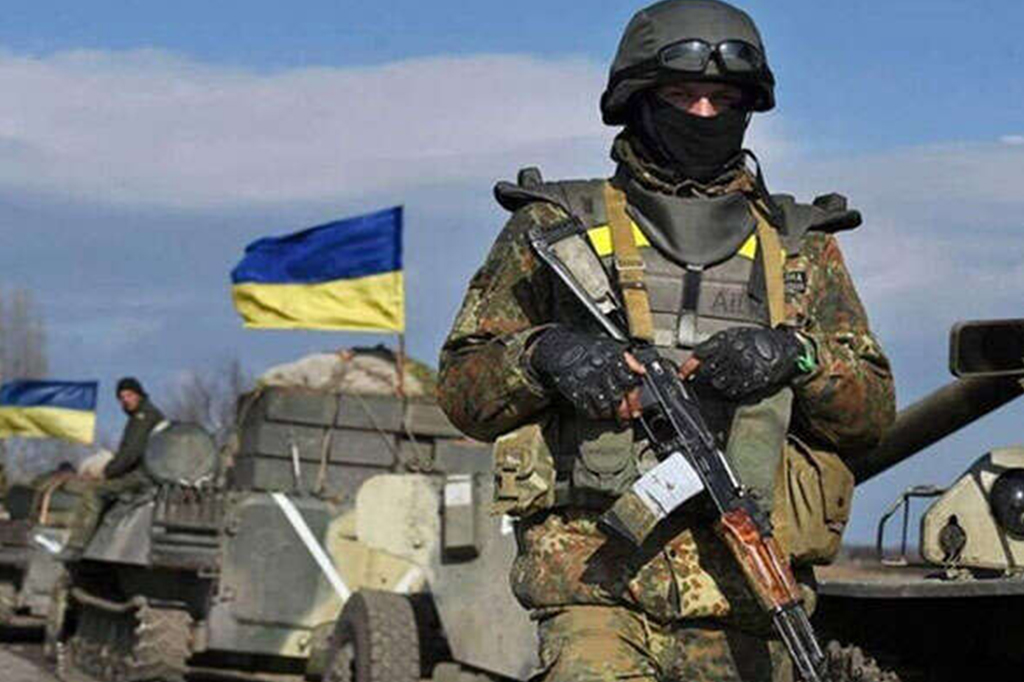
Ostap Kushnir: As an expert, you often emphasize the need to assess war dynamics at three levels: tactical, operational, and strategic. What is so specific about them and how effective are they overall? Is perfect knowledge of these levels all it takes to make someone a military expert, a full-fledged “armchair general”?
Mykola Bielieskov: These levels are used in standard assessments of warfare. Each of them is focused on a specific type of combat. At the tactical level the combat consists of an isolated skirmish, at the operational level it consists of an operation or sequence of clashes, and at the strategic level it is a complex of operations, which places the latter level on the margin between purely military and political activities. Therefore, for a proper assessment it is crucial to consider every situation at three levels—or at least at the first two, which are purely military.
Many people focus on the tactical level only, and this leads to distortions in their assessment of warfare. A major problem in late February 2022 was that the “armchair generals” observed the enemy’s advancement towards Kyiv with panic and started lamenting that “Russia is winning.” However, in due course the enemy retreated in a kind of “miraculous” way. This was not a miracle, though. Indeed, the Russians advanced rapidly at the very beginning, but they failed to achieve anything spectacular at the operational level of warfare. They were winning individual fights but could not win all of them, stretching their forces for dozens of kilometres along the front line as well as deep inside Ukraine’s territory.
At the tactical level, the effectiveness of isolated fights is assessed according to quantities of equipment destroyed, numbers of soldiers killed, and square kilometres of conquered land. On the other hand, effectiveness at the operational level is assessed according to the quantity of surrounded or incapacitated forces of the enemy. The Russians could not accomplish anything at this level. Notwithstanding their advancement and taking roads and population points under control, the Russians could not boast that they defeated Ukrainian forces, because the Ukrainians were being pushed back but were not incapacitated. They withdrew but simultaneously bided their time, limited the enemy to specific locations, and sabotaged its communications in the rearguard. Thus, when the Russians exhausted their offensive potential, the core of the Ukrainian forces still remained largely intact and was ready to move from manoeuvrable defence to offence. In this way Kyiv, Chernihiv, and Sumy oblasts were liberated.
Therefore, this war should not be perceived solely as isolated skirmishes, but as a sequence of clashes. If this is not done, then any enemy advancement will look disastrous. This was often the conclusion of many “armchair generals” during the first forty days of the Russian offence in the north of Ukraine.
Kushnir: Today, Western military analysts are making an interesting and seemingly contradictory statement. On the one hand, the war in Ukraine has shown that Russia is no longer a global power and that its capabilities are limited. On the other hand, Russia has learned from its mistakes and is about to start fighting “in full force,” which leaves Ukrainian defenders no chance. Which aspect of this statement do you agree to?
I am sure that the Russo-Ukrainian war should be and will be compared to the Winter War of 1939/40 between the USSR and Finland. At that time, following rapid industrialization the Soviets possessed tons of equipment and developed some fresh warfare strategies, but it all proved to be futile in reality. The same scenario is taking place in Ukraine today. Waging a major war on numerous fronts, deploying different types and kinds of troops, requires experience that is impossible to gain in peacetime.
If you’re wondering whether Russia will start fighting “in full force” soon, I doubt it. Already in the first wave of attack the Russian command deployed their best units: paratroopers, special forces, even elite armies such as the 1st Guards Tank Army or the 58th Army. Notwithstanding, they failed to achieve key objectives at both operational and strategic levels. All they accomplished were minor breakthroughs.
Certainly the Russians may review their tactics and start attacking on the ground with powerful air support. However, this is easier said than done. As I have mentioned above, this requires combat experience and comes at a very high price. Without a doubt, the Russians have learned to fight better already, but they’ve suffered considerable losses along the way. According to estimates on the Ukrainian side, they have lost around 40 percent of their battalion tactical groups, entirely or partially. For that reason, they decided to move their remaining troops from northern Ukraine to its east and try achieving successes at least there.
As for me, any kind of training and drills that are conducted in peacetime will never replace combat experience—especially in today’s Russian case. The paradox is that the Russians decided to execute a major offensive on numerous fronts while deploying a peacetime army. Similar offensives were executed by the USSR only in the fifth year of the Second World War, in 1944, with Soviet economics readjusted to the military purpose. Thus, it is not surprising that the Russians failed the initial strike and need to downgrade their ambitions now.
Given the quality and quantity of remaining troops, even if their tactics are changed the Russians are limited in their options. They cannot fight in full force as they lack both manpower and equipment. All the elite units have suffered damage and it will take at least six months to fully restore their battle capacity or create additional units.
Kushnir: What is your opinion of the response of Ukrainian society to the war? The concept of “resilience” is commonly used in Western security studies today to explain the ability of a society to absorb shock and adapt to stress. How resilient do you think Ukrainian society is? To what extent is it ready to counteract aggression?
Speaking of the wartime resilience, I would like to highlight the prompt response of Ukrainian society to the military mobilization. The grassroots motivation to defend their land is so impressive among ordinary Ukrainians, with the role of the state being secondary. This fantastic mobilization and self-organization effectively compensate shortcomings which the army experienced before the war, especially the lack of equipment.
I do not know much about other types of resilience, such as assistance to internally displaced people and mitigation of other outcomes of war. However, assessing readiness for war per se, Ukrainian society is doing phenomenally well. The amount of resources that ordinary Ukrainians have allocated and donated directly to combat efforts at the front, bypassing the state altogether, is unprecedented (and, it bears repeating, has been ongoing since 2013).
When future historians write about the Russo-Ukrainian war, they will doubtlessly dedicate much attention to the Ukrainian mobilization and self-organization. In the last 150 years it has been solely the state’s task to prepare and support armies on the battlefield. However, since the first day of this war Ukrainians have willingly shifted much of this burden onto their shoulders. In Russia, on the other hand, the situation is quite the opposite. Their state-run war machine lacks a powerful grassroots support. Numerous problems observed in the invading army today, particularly its poor combat readiness and basic lack of food or fuel, stem from the state’s incapacity to manage all needs fast. Therefore, a great number of Ukraine’s victories belong to Ukraine’s civil society.
Kushnir: What is the significance of the Western support to Ukraine in this war? Which aspects of Western engagement do you consider crucial for a successful defence: sanctions against Russia, arms supplies, diplomatic pressure? Is there anything missing in the Western engagement?
Bielieskov: Let me start from the optimistic statement that Russia underestimated the reaction of the West and Ukraine made a pivotal impact on framing that reaction. In the very first days, or even hours, of the war, many European officials claimed that Ukraine would not last long under the Russian assault. Very few officials in the US also believed in survival of the government in Kyiv. Nevertheless, the initial effort of the Ukrainian defence and security forces and their systematic resistance since then have made Western governments reconsider their opinion.
The Russians expected to complete a fast campaign and subjugate Ukraine before the West “awakens.” They also expected that the Western reaction would be modest, even symbolic. However, the Ukrainian army crushed all these expectations by winning time and forcing the West to face the problem.
Western diplomatic support also needs to be more deliberate. For instance, on 2 March 2022 during the vote in the UN General Assembly to condemn the Russia’s war in Ukraine, 141 states voted in favour and 35 abstained. I think the West could have done much more on the eve of the voting to further decrease the number of abstentions. The global support to Ukraine could be more articulate.
Western engagement in arms supplies is probably the most elaborate factor. Here, however, there is also much room for improvement. On the one hand, Ukraine has received large volumes of defensive weaponry from the West. On the other hand, it is light weaponry—mainly portable anti-aircraft and anti-tank missile systems. This weaponry neatly fit the initial objectives of Ukraine’s defensive operation; however, it has never been enough. Heavy weaponry is what provides incomparable advantage and what is missing.
I share the feeling that many Western decision makers have a distorted image of how Ukraine fights. In modern warfare, defending with light weaponry only would lead to agony for the defenders. Only in combination with the old Soviet artillery complexes and new national systems, such as Stugna-P and Corsair, can the West’s light weaponry lead to a positive result for Ukraine.
Heavy weaponry and artillery will allow Ukraine to destroy the columns of enemy vehicles much in advance, before they reach close combat range. This is incomparably more effective and live-saving when compared to destroying the individual vehicles with the help of Javelin or NLAW. Furthermore, the long-range heavy weaponry, supported with missile-carrying unmanned aerial vehicles like Bayraktar, allow to attack the enemy command posts and logistical infrastructure deep in the rear, 30-40 kilometres away from the combat zone. This is impossible with Western portable systems, which have been designed for close combat. In other words, abundance of Javelins and NLAW’s by no means can compensate the scarcity of the classical long-range barrel artillery. Today, without the heavy systems and complexes, remaining from the Soviet times, the Ukrainian defenders would slowly agonise.
Kushnir: If I asked you to put it in a nutshell, what kind of Western weaponry would you say Ukraine needs now?
Bielieskov: Above all, the needs of Ukraine include long-range barrel artillery, heavy anti-aircraft and anti-missile weaponry, and thousands of manoeuvrable all-terrain vehicles, desirably with some armour on them.
Kushnir: What is your opinion of Russia’s nuclear blackmail? To what extent do you find it probable that Putin will press the “red button”? Some of the Western states seem to take this blackmailing seriously and restrain their engagement in Ukrainian affairs. Is such restraint justified?
Bielieskov: Unfortunately, following the events of 24 February 2022, no threat should be disregarded. We live in a world where many “red lines” have been crossed already. I am afraid that if Russia continues underperforming in conventional warfare, its leadership may demonstratively resort to tactical nuclear weaponry. The territory of Ukraine is then, as now, a likely target.
The West has already experienced similar pressure from the USSR during the Cold War. There was much lamenting among the European elites then: “Why should we die for the Western Berlin”? Cold War history demonstrated that the readiness to die for Western Berlin was necessary. It made the Soviets step back, moderate their rhetoric, and start negotiating.
The Russians should understand today—same as the Soviets understood decades ago—that nuclear blackmail fails to work as a tool of escalation. This understanding will push the Russians back to the path of negotiations. Otherwise, they will continue blackmailing the West on every occasion, whenever they decide to achieve any objective in future.
Kushnir: Do you agree that the Western states in talks with Russia downplay the importance of Ukraine’s position? That is, are the discussions about Ukraine taking place behind Ukraine’s back?
Bielieskov: Downplaying Ukraine’s interests might have been the case earlier, but not today. In late December 2021 and early January 2022, the most active negotiations were held between US, NATO, and Russia. Today, Ukraine has a separate track of negotiations with Russia and speaks to the Kremlin directly.
The major problem, as I see it, is the obstinate desire of a part of the Western elites to strike a deal with Russia as soon as possible. They create pressure on Kyiv and advocate compromises at the expense of Ukraine. Luckily, Ukraine has also found support in the face of the UK government and some authoritative media. They put it straightforwardly: Ukraine has to win. I find this approach to ending the war more reasonable.
Western fans of the compromise continue overestimating the capabilities of Russia for fast mobilization and recovering of lost resources. The reality is that if the Russian command conducts one or two disastrous operations more, similar to the attacks on Kyiv and Mariupol, they will have no soldiers and equipment left to continue fighting. The aviation, missile, and artillery units will be useless without support of infantry on armoured vehicles. Under such a scenario, it is Russia who will seek for a peace deal on unfavourable conditions. What the West needs to do now is to provide Ukraine with heavy weaponry. This will also be right to prevent new atrocities which Russian soldiers have been observed committing in Ukraine.
To summarise, I do not think that the West and Russia speak about Ukraine behind Ukraine’s back. Kyiv is actively engaged in all talks. The problem is that selected Western political circles and experts push for peace deals on unfavourable for Ukraine conditions. Instead, Ukraine is ready to fight, walk the thorny path till its end, and achieve a convincing victory. Only after such a victory, bolstered with the Western weaponry, a proper talk with Russia will take place.
Kushnir: You often say that predicting scenarios for the of the war is a tricky business because all scenarios anticipate political responses to changeable environment. However, from the purely military perspective, which status quo looks the most plausible to you?
Bielieskov: If Ukraine succeeds with its defensive operation in the east and Russia loses its offensive potential completely, the invaders would need to leave all the temporarily occupied territories. Afterwards, negotiations would start on numbers and armament of the Ukrainian Armed Forces, frameworks of Ukraine’s cooperation with NATO, and other issues of military and technical cooperation with the West. The ongoing Russo-Ukrainian negotiations and initial peace drafts are tentative and non-binding. The provisions of the final peace treaty are yet to be written on the battlefield.
The recent Russian demands for the demilitarization of Ukraine and forfeit of NATO membership are totally unacceptable. Under such a scenario Ukraine would become defenceless against new Russian aggression. Therefore, Ukraine’s major objective today is to obtain reliable security guarantees from external actors, including Russia. The architecture of these guarantees is a topic of heated debate and bargaining. Ultimately, this architecture will be decided by the successes of Ukrainian Armed Forces.
What Ukrainian diplomacy needs to do now is to clearly communicate to the Kremlin that its maximalist demands will never be put into practice, regardless of the outcomes of the war. The Ukrainian side also needs to avoid maximalist temptations; at least, not before Kyiv controls all the tools of pressure on Russia, including sanctions.
In case of a Ukrainian victory on the battlefield, the Kremlin will need to choose: either Ukraine joins NATO and has its armed forces reduced, or it remains a non-aligned state with a powerful army, much more powerful than it has ever had, built with the help of Western partners. Ukraine may also demand then the prohibition of stationing of Russian forces close to its borders.
The good news for today is that Ukrainian defenders have tasted victory. They’ve learned to wipe out invaders and have proved to the world that the Russian army can be stopped. In forty days of fighting the presumably undefeatable Russian war machine could not accomplish anything on operational level.
Ukrainians are for the win now. The West must decide if it is an engaged bystander or a trusted ally.
Interview was conducted in Ukrainian and translated by Ostap Kushnir
